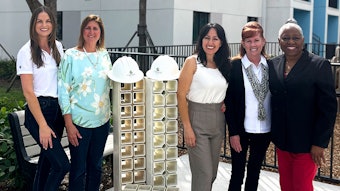
It looked like a textbook example of an immaculately excavated foundation for a residential home. There were crisp ninety degree angles at all the corners. The high-tech laser was perched perfectly, ensuring exactness down to the tenth of an inch. It was a fantastic looking foundation… with one exception. And this exception was major. The foundation was backwards.
"So whaddya think?" I asked.
"I think the schedule is off," the superintendent quipped. I Agreed. His sense of humor served him well here.
I pushed the conversation forward.
"What did the excavator say?"
"Dunno - he's Hispanic. And I don't speak Spanish…."
Speaking Spanish fluently, I ask, "Oye vato… qué piensas?" (Hey dude… what do you think?)
"Oh boy. I think this foundation is screwed up big-time, mayn."
The air was sucked out of my Superintendent's lungs instantly. His embarrassment was the type that causes grown men to weep.
Not only did the Superintendent fail to check the one critical item on the "To Do List" prior to excavation, he also made a poor assumption about the language barrier when the time came to solve the problem.
Note: Many Hispanics speak fluent English. Good to know.
But what about situations when there is a legitimate language barrier? How can we solve problems then? Humor may add some levity to the situation, but it won't solve anything….
Here is a simple 3.25 step guide to help you solve problems en Español, even if you are only fluent in English.
Step 1
Problema
(proh-BLAY-mah)
Problem
Very easy to remember - just add an "A" to the end of "Problem."
Keep in mind the "E" in Spanish is pronounced as an "A." Before your brain starts to hurt too much from that statement, just think of Las Vegas. It's not pronounced (lahs VEE-gahs).
It's (lahs VAY-gahs), right?
Problema
(proh-BLAY-mah)
Problem
Now that you are pronouncing it correctly, walk up to your Spanish-speaking friend, arch your eyebrows like the McDonald's M and ask curiously, "¿Problema?"
If the answer is returned with a "No," fantastic! Carry on. If the answer is returned with a "Yes," proceed to Step 2.
Step 2
So you've got a problema - how unique. It's construction, of course you do! Now let's find out where the problem is.
¿Dónde?
(DOHN-day)
Where?
Scanning your immediate environment, ask "¿Dónde?"
Make direct eye contact until he begins to move toward the area with said problema.
Step 3
¿Solución?
(soh-looh-SYOHN)
Solution?
This Spanish-English pair is very close! Keep in mind the last syllable gets the stress. Other than that, this is an easy pair to remember.
Many individuals make the common mistake of learning of a problema and its specific location, but then allow the fear of the language barrier to take over the situation.
Use this fear as your guiding light, your north star. Don't back away from it - lean into it. It's all upside. Worst-case scenario you are back to where you started.
Ask the individual who told you about the problema if he has any proposed method to solve the problema.
Raise the palms of your hands skyward, shrug generously and ask, "¿Solución?
If he responds with a "Sí" or begins to work on solving the problema right before your eyes, pat yourself on the back - congrats, you're solving problemas with Español.
If he responds with feedback en Español, prepare for Step 3.25.
Despacio
(day-SPAH-syoh)
Slowly
Upon the request of a solución, the Spanish-speaker launched into a 400-word diatribe about...something.
Uh oh.
That's ok - the communication barrier is still there, we're just working around it. Sometimes the Spanish-speaker will wish to inform you of other pertinent details.
Now what do we do?
Step 3 requires you to say/ask/plead Despacio (day-SPAH-syoh). You are imploring the speaker to slow down. Adding a little por favor (pohr fah-BOHR…..please) after despacio wouldn't hurt either.
You can remember despacio by mentally breaking the word down. You want the Spanish-speaker to "de-pace" himself - slow down.
Despacio, por favor.
(day-SPAH-syoh pohr fah-BOHR)
Slowly, please.
This isn't a fool-proof method, by any means. You could still very well be up the creek without a paddle. But at least now you are mentally prepared to hear words in Spanish - and if they are spoken slowly, there is a chance you can make something out.
Step 3.25
Here we regroup (deep breath, don't panic - you are doing great!) and revisit Step 3, with a slight modification.
Here we ask, "¿Solución - Sí o no?"
What you are doing here is saying, "Hey man, let's keep this simple…. Do you have a solution? Yes or no?" If he says, "Sí," well then, victory is yours!
If he says anything other than this, gather as much info as you can, document the details of the situation and continue on with your day. This won't be the only problema you need to revisit later on.
So that's it! A simple 3.25-Step guide to problem-solving en Español.
But remember the foundations of communication - don't assume anyone does or doesn't speak the same language you do. Thinking this way may have you acting like the foundation we discussed - your thinking, like the foundation, will be backwards.
Bradley Hartmann is el presidente and founder of Red Angle - a Spanish language training firm focused exclusively on the construction industry. He can be reached at [email protected] and www.redanglespanish.com.


























